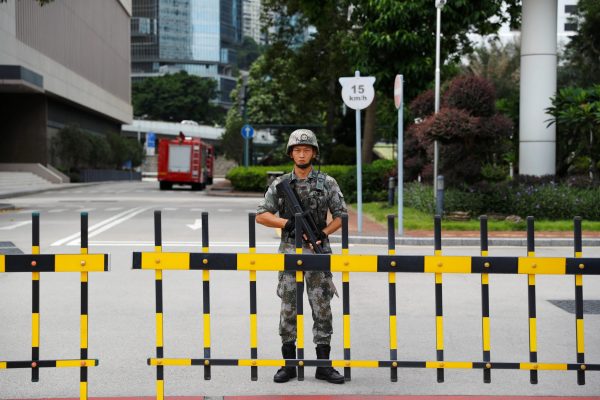The first goal is to ‘generally achieve mechanisation by the year 2020 with significantly enhanced informationisation’. The second goal is to ‘complete the modernisation of national defence and the military by 2035’, including the ‘modernisation of military theory, organisational structure, military personnel, and weaponry and equipment’. The third goal is to ‘fully transform’ the PLA into a ‘world-class force’ by the middle of the 21st century (generally interpreted to mean 2049, the centenary of the People’s Republic of China).
The next 15 years or so (2020–35) will be the most crucial phase of this modernisation process. In this regard, the concept of informationisation is central to understanding what China means by the ‘complete military modernisation’ of the PLA. The PLA appears to be progressing towards becoming a truly ‘informationised’ armed force — that is, one capable of ‘fighting and winning wars in the information age’.
Central to ‘informationisation’ is de-emphasising the PLA’s traditional ‘army-centric mindset,’ and instead placing greater priority on sea power and airpower. As a result, the PLA Navy is ‘speeding up the transition of its tasks from defence on the near seas to protection missions on the far seas, and improving its capabilities for strategic deterrence and counterattack, maritime manoeuvre operations, maritime joint operations, comprehensive defence, and integrated support’.
Concepts of ‘informationised warfare’ also put a much greater emphasis on both space and cyber operations. The 2019 White Paper bluntly states that ‘outer space is a critical domain in international strategic competition’. The weaponisation of space is increasingly a fact of life and a key future battlespace regarded as ‘a key area for national security, economic growth and social development’. China plans to develop the capacity to ‘enter, exit, and openly use outer space’.
The PLA is nearing the end of a unique ‘double construction’ effort that begun in the early 2000s of simultaneously pursuing both mechanisation and informationisation. On the one hand, the PLA began to upgrade its current arsenal of conventional ‘industrial age’ weapons through upgrades and retrofits, including improved communications systems, new sensors and seekers and better precision-strike capacities. At the same time, the PLA began to build informationised capabilities by putting greater effort and resources into command and control, communications, computing infrastructures, surveillance and reconnaissance systems, networking, and information warfare.
It is difficult to gauge the PLA’s progress when it comes to implementing informationisation. It has acquired — or is continuing to acquire — much of the hardware associated with informationisation, particularly systems relating to command, control, communications, computing, intelligence, surveillance and reconnaissance. Chinese warships and combat aircraft have been outfitted with modernised electronics and avionics. China’s capacity for electronic warfare and cyberwar has also progressed. Finally, the PLA is improving in the ‘kinetic’ side of informationisation, with new systems for stand-off precision striking such as GPS-guided bombs, longer-range anti-ship and anti-aircraft missiles, and hypersonic weapons.
But from a relative standpoint compared to the US military or other regional armed forces (particularly Japan or Australia), the PLA’s development of informationised capabilities has been modest. Most progress has basically been ‘catching up’ to the technological standards of warfare set by the West. The informationised capabilities of the PLA have basically moved from the 1960s into perhaps the 1990s.
Nor does China appear to be moving from a platform-centric to a network-centric PLA. Hardware is still more important to the PLA than informationised systems, with a continuing emphasis on acquiring new surface combatants, submarines, fighter jets, tanks and armoured vehicles. Truly modern weapons that replace aging or even obsolete systems are still a minority in PLA inventories. And the PLA is still very much a ground-force dominated military, with nearly one million soldiers in the army.
Chinese military modernisation is still basically synonymous with the ‘pockets of excellence’ assessments of the 1990s and 2000s, although it has added some new ‘pockets’, particularly in space-based systems. Fully implementing informationisation — and reaping its intended benefits — will, of course, take time. This is why the PLA does not envision becoming a ‘world-class force’ until 2049.
When it comes to predicting China’s success in informationising its military, it is important to remember two well-worn sayings about the country: ‘China has come a long way’ and ‘China has a long way to go’. Although these platitudes are approaching being cliches, they are still useful with regards to the order in which they are used. That order speaks volumes as to how we interpret Chinese progress in raising the level of its military relative to global standards. Both are truisms, but one must inevitably be truer than the other.
Richard A Bitzinger is a Visiting Senior Fellow at the S Rajaratnam School of International Studies (RSIS), Nanyang Technological University (NTU), Singapore.

